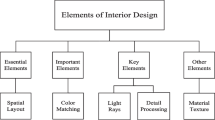Abstract
For wireless control between smart devices, recent studies have mainly used Wi-Fi or Bluetooth technology. However, for Wi-Fi, the user requires extra infrastructure such as an access point. For Bluetooth, both users must have the same mobile operating system (OS), and several seconds elapse when pairing the smart devices. This paper proposes a near wireless control technology between smart devices using a microphone and the speaker of a smart device at near distances, to solve these problems. The control signals of the proposed method use the inaudible high frequencies of an audible domain that cannot be recognized by humans. The other smart device receives the control signals and then executes the specific function. Currently, if only a high frequency is used for the control signal, errors owing to unexpected sounds in the environment can occur. Therefore, our method uses two types of frequency signals. One signal is based on an audio file of the signals, and the other signal is a low-latency audio frequency. To evaluate the efficacy of the proposed method, we experimented with a near wireless-controlled camera in various situations and at various distances. The success rate was about 96 %. Then, we conducted an experiment to determine whether or not the people located around the device recognized the control signals when we used it. The percentage of people who were not conscious of the control signals was 97 %. Therefore, the proposed method is a useful technique for many types of near wireless-control between smart devices.











Similar content being viewed by others
References
Bihler P, Imhoff P, Cremers AB (2011) SmartGuide - A smartphone museum guide with ultrasound control. Procedia Comput Sci 5:586–592. doi:10.1016/j.procs.2011.07.076
BUMP Technologies Inc. (2013) BUMP. http://bu.mp/company/api/. Accessed 2 July 2012
Chung CC, Huang CY, Wang SC, Lin CM (2011) Bluetooth-based Android interactive applications for smart living. In: Proc. 2nd International Conference on Innovations in Bio-inspired Computing and Applications (IBICA). Shenzhen, China, pp 309–312. doi:10.1109/IBICA.2011.82
Chung M, Ko I (2011) An algorithm that minimizes audio fingerprints using the difference of Gaussians. J Zhejiang Univ Sci C 12(10):836–845. doi:10.1631/jzus.C1000396
Daniel A (2010) WiFi Camera. http://danielamitay.com/wifi-camera. Accessed 2 July 2012
De Dominicis CM, Mazzotti D, Piccinelli M, Rinaldi S, Vezzoli A, Depari A (2012) Evaluation of Bluetooth Hands-Free profile for sensors applications in smartphone platforms. In: Proc. Sensors Applications Symposium (SAS). Brescia, Italy, pp 1–6. doi:10.1109/SAS.2012.6166305
Eberhard S (2012) Sound engineering calculator. For microphone recording techniques and studio technology. http://sengpielaudio.com/calculator-SoundAndDistance.htm. Accessed 9 September 2013
Faber Acoustical, LLC (2010) iPhone 4 audio and frequency response limitations. http://blog.faberacoustical.com/2010/ios/iphone/iphone-4-audio-and-frequency-response-limitations. Accessed 2 July 2012
Hamming RW (1950) Error detecting and error correcting codes. Bell Syst Tech J 29(2):147–160
Jeo W (2012) Why do smartphone owners buy tablets? Betanews. http://betanews.com/2012/01/25/why-do-smartphone-owners-buy-tablets/. Accessed 9 September 2013
Jeon YH, Ahn H (2011) A multimodal ubiquitous interface system using smart phone for human-robot interaction. In: Proc. 8th International Conference on Ubiquitous Robots and Ambient Intelligence (URAI). Incheon, Korea, pp 764–767. doi:10.1109/URAI.2011.6146007
Kemp R, Palmer N, Kielmann T, Bal H (2010) Opportunistic communication for multiplayer mobile gaming: Lessons learned from photoshoot. In: Proc. 2nd International Workshop on Mobile Opportunistic Networking. Pisa, Italy, pp 182–184. doi:10.1145/1755743.1755780
Kim JB, Song JE, Lee MK (2012) Authentication of a smart phone user using audio frequency analysis. J Korea Inst Inf Secur Cryptol 22(2):327–336
Magic Jungle Software (2011) Chopper 2. http://majicjungle.com/chopper2_iphone.html. Accessed 2 July 2012
Maiti S, Dutta S (2011) Interoperation of Bluetooth and Wi-Fi using OSGi(Open Services Gateway Initiative). In: Proc. 2nd International Conference on Emerging Applications of Information Technology (EAIT). Kolkata, India, pp 239–242. doi:10.1109/EAIT.2011.50
Miluzzo E, Hong L, Peebles D, Choudhury T, Campbell AT (2010) A survey of mobile phone sensing. Commun Mag IEEE 48(9):140–150. doi:10.1109/MCOM.2010.5560598
Moon SW, Kim YJ, Myeong HJ, Kim CS, Cha NJ, Kim DH (2011) Implementation of smartphone environment remote control and monitoring system for Android operating system-based robot platform. In: Proc. 8th International Conference on Ubiquitous Robots and Ambient Intelligence (URAI). Incheon, Korea, pp 211–214. doi:10.1109/URAI.2011.6145963
Moser T (2010) Design and implementation of a multiplayer peer-to-peer game for Android mobile devices. Doctoral dissertation, Master Thesis, Department of Informatics, University of Zurich
Panasonic Inc. (2012) Panasonic remote camera control app for Android smartphones. http://www.diginfo.tv/v/12-0018-d-en.php. Accessed 2 July 2012
Ryu CJ (2012) The design of remote control car using smartphone for intrusion detection. Comput Sci Appl Lect Notes Electr Eng 203:525–533. doi:10.1007/978-94-007-5699-1_53
SMHK Ltd (2010) PadRacer. http://padracer.com/. Accessed 2 July 2012
Spanner S (2011) Bluetooth file sharing from an iPhone to an Android. Small Business. http://smallbusiness.chron.com/bluetooth-file-sharing-iphone-android-32333.html. Accessed 9 September 2013
Studer A, Passaro T, Bauer L (2011) Don’t bump, shake on it: the exploitation of a popular accelerometer-based smart phone exchange and its secure replacement. In: Proc. 27th Annual Computer Security Applications Conference. Orlando, Florida, USA, pp 333–342. doi:10.1145/2076732.2076780
Tung NH, Leu JS (2012) Design and implementation of game controller on smartphone. In: Proc. 2012 I.E. International Conference on Consumer Electronics (ICCE). Las Vegas, NV, USA, pp 684–685. doi:10.1109/ICCE.2012.6162028
Tysowski PK, Zhao P, Naik K (2011) Peer to peer content sharing on ad hoc networks of smartphones. In: 7th International Wireless Communications and Mobile Computing Conference (IWCMC). Istanbul, Turkey, pp 1445–1450. doi:10.1109/IWCMC.2011.5982751
Van Nieuwpoort RV, Maassen J, Wrzesinska G, Hofman RF, Jacobs CJ, Kielmann T, Bal HE (2005) Ibis: a flexible and efficient Java-based Grid programming environment. Concurr Comput Pract Experience 17(7–8):1079–1107. doi:10.1002/cpe.860
Wang CY, Lai AF (2011) Development of a mobile rhythm learning system based on digital game-based learning companion. In: Proc. 6th International Conference on E-learning and Games, Edutainment. Taipei, Taiwan, pp 92–100. doi:10.1007/978-3-642-23456-9_17
Wi-Fi Alliance (2010) Wi-Fi Direct. http://en.wikipedia.org/wiki/Wi-Fi_Direct. Accessed 2 July 2012
Acknowledgements
This research was supported in part by MSIP and MOE, Korean government, under IT R&D Program[10041244, SmartTV 2.0 Software Platform] through KEIT, Basic Science Research Program (NRF-2013R1A1A2061478) and PRCP(NRF-2010-0020210) through NRF, respectively.
Author information
Authors and Affiliations
Corresponding author
Rights and permissions
About this article
Cite this article
Chung, M.B., Choo, H. Near wireless-control technology between smart devices using inaudible high-frequencies. Multimed Tools Appl 74, 5955–5971 (2015). https://doi.org/10.1007/s11042-014-1901-x
Published:
Issue Date:
DOI: https://doi.org/10.1007/s11042-014-1901-x




